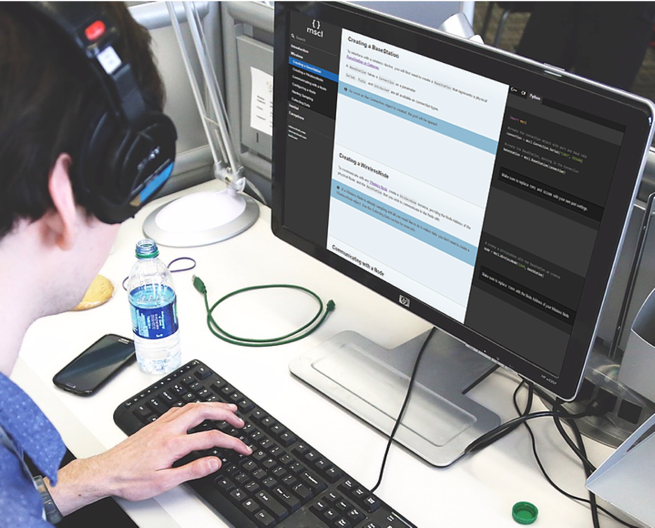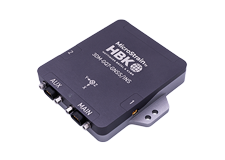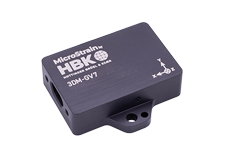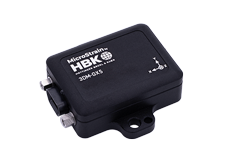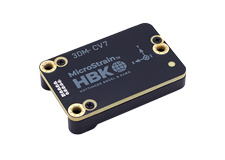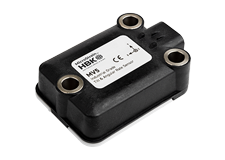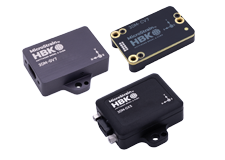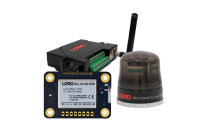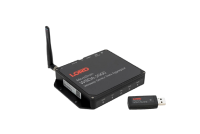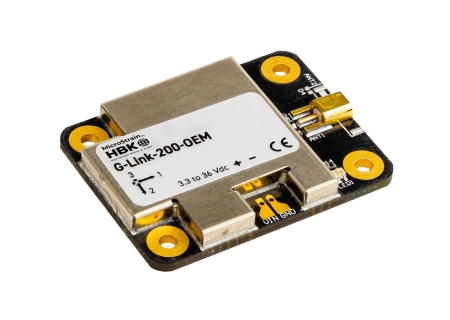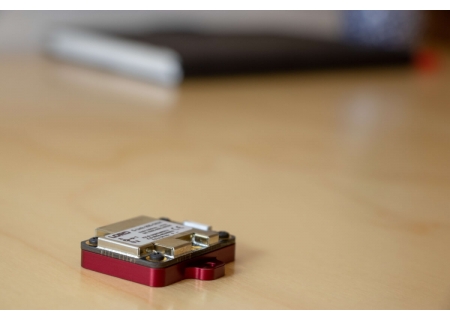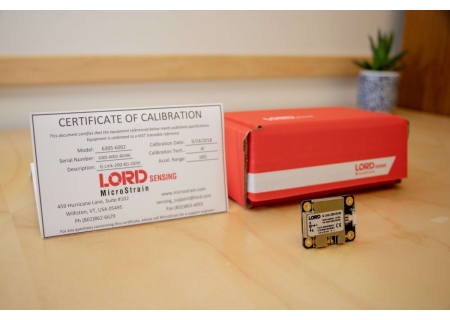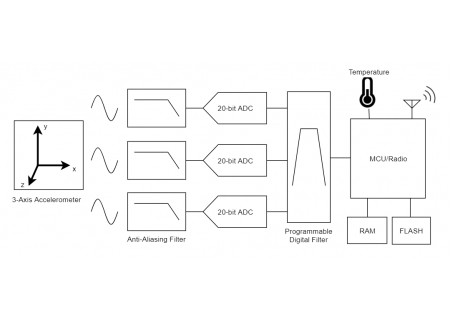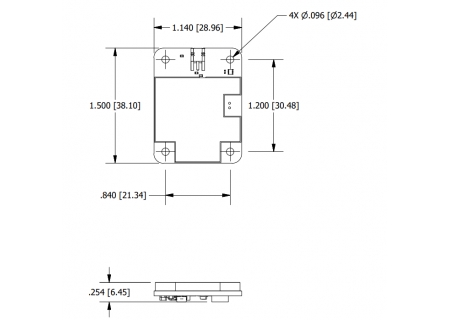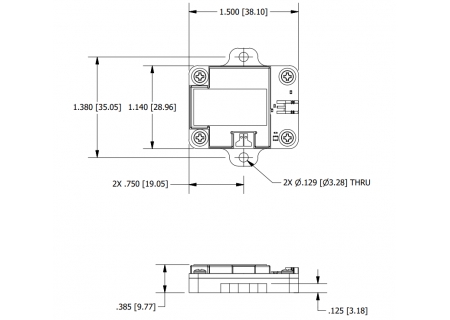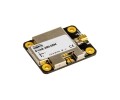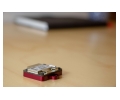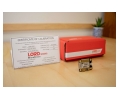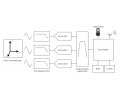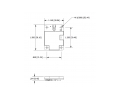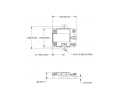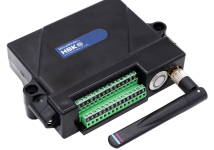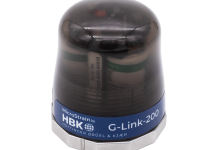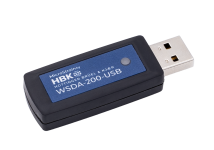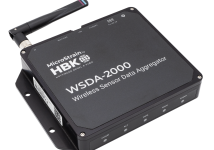G-Link-200-OEM Embeddable Wireless Accelerometer, 3-Axis
Lord wireless sensor networks are fast to deploy and provide reliable, lossless data throughput. These networks are proven to work in demanding industries where reliable data acquisition is critical.
Specs
Sensor Input
- Integrated 3-axis high performance accelerometer
- DC to 1KHz bandwidth
-
Adjustable input range
- ±2/4/8G (G-Link-200-OEM-8G)
- ±10/20/40G (G-Link-200-OEM-40G)
-
Extremely low noise density
- 25 µg/√Hz (G-Link-200-OEM-8G)
- 80 µg/√Hz (G-Link-200-OEM-40G)
- Programmable high- and low-pass digital filters
- On-board temperature sensor (+/- 0.25°C)
- Tilt (±1° accuracy, <0.1° precision)
Operation
- Adjustable sampling rate up to 4 kHz
- Continuous, periodic burst, or event-triggered operation
- LXRS protocol allows lossless data collection, scalable network size, and node synchronization of ±50 µs
- Output acceleration waveform data, tilt, and/or derived vibration parameters (Velocity, Amplitude, Crest Factor)
- Datalogging up to 8 million data points
- Wireless range up to 1km
Package
- Power with 3.3 to 36 VDC
- –40 to +85 °C operating temperature range
- Humiseal 1B31 Conformal Coating
- 4 mounting holes sized for 2-56 UNC
- Optional aluminum base and power terminal
- Antenna options include on-board, MMCX, or U.FL connector
Use Cases
Small form factor and wide input range make it easy to embed wireless sensing into many applications.
Low power requirements enable long-term monitoring under battery power.
Text and Email alerts from SensorCloud.
End-to-end data acquisition system reduces the time and cost of testing.
Remotely configure and collect data from a network of nodes in real time using SensorConnect.
Easily write your own custom software using the open source MicroStrain Communication Library (MSCL).
Event-Driven sampling allows for reporting only the data of interest around a predefined event.
User configurable pre- and post-event duration allow you to see the data that led up to the event, and how the data progressed back to normal conditions.
Documentation
General Documentation
Downloads
Video
Software
SensorConnect
Free
SensorConnect is the next generation in desktop sensing software.
From configuration of nodes and starting networks, to collecting and analyzing data in real-time, SensorConnect provides a modern, powerful experience with our Wireless, Inertial, and Displacement products.
Using our intelligent data collection and graphing algorithms, you are able to visualize massive amounts of data instantly, and then zoom in on points of interest just as fast.
Built in MathEngine functionality allows for both real-time and post-processed math, such as generating FFTs, averages, RMS, etc.
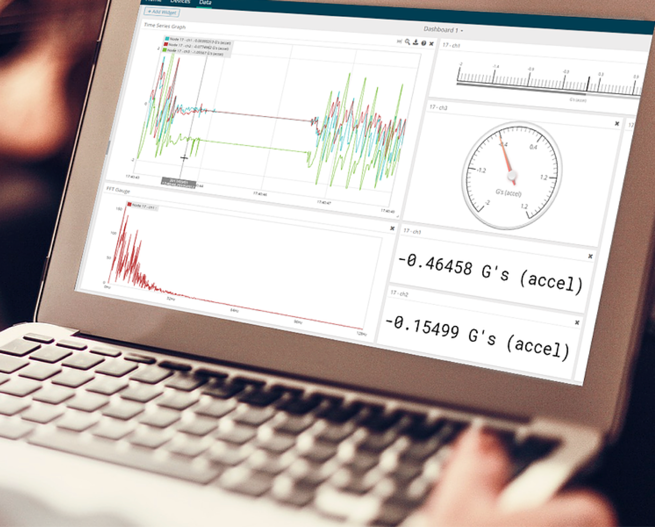
SensorCloud™
Free and paid plans available
SensorCloud is a unique sensor data storage, visualization, and remote management platform that leverages powerful Cloud computing technologies to provide excellent data scalability, rapid visualization, and user programmable analysis.
LORD sensors can instantly upload their data to SensorCloud via an ethernet-connected WSDA-2000. Once uploaded, your data is securely stored in the Cloud and can be accessed from anywhere, or downloaded for offline use.
Configurable alerts can be set to help notify you of real-time event in your data.
MathEngine allows you to perform analytics on your data, all in the Cloud. Pre-built functions are available for ease of use, while IPython Notebooks allow advanced users to write custom scripts to be run on their data once, or on a schedule.

{MSCL}
Free and open source API
The MicroStrain Communication Library (MSCL) makes it simple to write code that interacts with our Wireless, Inertial, and Displacement sensors.
MSCL is completely open source and hosted on GitHub under the MIT license.
Full documentation, example code, and a quick start guide are provided to help you get started.
Available for C++, Python, and .NET.
